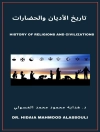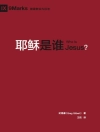In ‘The Symbolism of Churches and Church Ornaments, ‘ Guillaume Durand meticulously explores the intricate meanings embedded in ecclesiastical architecture and artifacts. His work delves into medieval European spiritual and cultural contexts, revealing how architectural elements such as spires, bell towers, and stained glass serve as conduits for divine symbolism. Durand employs a rich scholarly style, integrating historical analysis with theological insights, presenting a compelling narrative that not only highlights the aesthetic beauty of churches but also their profound significance in the medieval psyche. The book situates itself firmly within the frameworks of art history and religious studies, offering a nuanced interpretation of how these sacred spaces manifest societal values and beliefs. Guillaume Durand, a noted scholar of medieval studies, draws on his extensive background in theology, art history, and cultural symbolism to craft this illuminating work. His intimate knowledge of Gothic architecture and his scholarly inquisitiveness into the medieval worldview inform his exploration of church design, engaging critically with sources from both ecclesiastical traditions and contemporary scholarship. Durand’s passion for understanding the visual language of the past greatly enriches his examination of spiritual spaces. This book is highly recommended for anyone interested in medieval studies, religious symbolism, or architectural history. Durand’s insightful analysis not only enhances our appreciation of church architecture but also opens a dialogue between past and present, shedding light on how sacred spaces continue to influence contemporary spiritual experiences.
Despre autor
Guillaume Durand, also known as Durandus of Mende, was a respected medieval author and cleric who lived during the 13th century. He was born around 1230 and passed away in 1296. Durand is most famous for his seminal work ‘Rationale Divinorum Officiorum’ (The Symbolism of Churches and Church Ornaments), written around 1286, which constitutes a comprehensive treatise on the liturgy and ecclesiastical symbolism of the time. As the Bishop of Mende, his insights into religious practices and liturgical art represent a significant contribution to the understanding of medieval Christian iconography. Durand’s scholarly method combines the theological interpretation of church ornaments and symbols with practical guidance for the clergy. His work illustrates a keen interest in the didactic role of church art and architecture. This reflects his broader ecclesiastical philosophy that the clergy’s responsibility is to edify the laity, not only through sermons but also through the surrounding physical space of worship. Durand’s treatise is considered a valuable source for art historians and theologians alike, providing a window into the allegorical language of the medieval Christian church. He incorporates an intricate blend of scriptural references, patristic teachings, and scholastic thought, marking his style as erudite and didactic. The comprehensive nature of Durand’s literary output enshrines him as an important figure in the canon of medieval church writers and a key precursor to the wave of cathedral building that swept across Europe in the ensuing centuries.




